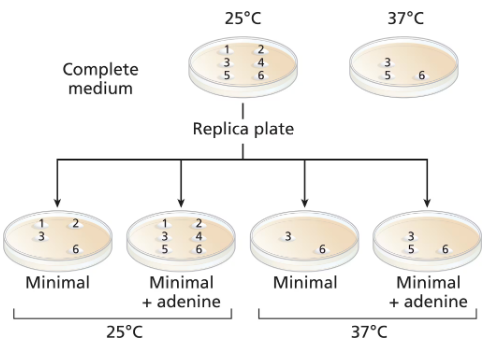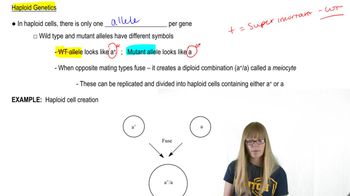Here are the essential concepts you must grasp in order to answer the question correctly.
Mutagenesis
Mutagenesis is the process by which the genetic information of an organism is changed, resulting in a mutation. In this context, the wild-type yeast is treated with EMS (ethyl methanesulfonate), a chemical mutagen that induces random mutations in the DNA. Understanding mutagenesis is crucial for analyzing the resulting phenotypes of the yeast colonies, as it helps to identify whether the mutations are beneficial, neutral, or harmful.
Recommended video:
Haploid Organisms
Haploid organisms, like the yeast Saccharomyces cerevisiae, have a single set of chromosomes, which simplifies the analysis of genetic mutations. In haploids, any mutation will directly affect the phenotype since there is no second allele to mask its effects. This characteristic makes haploid yeast an excellent model organism for studying gene function and mutation effects, particularly in experiments involving mutagenesis.
Recommended video:
Phenotypic Analysis
Phenotypic analysis involves observing and classifying the physical and functional traits of organisms resulting from their genetic makeup. In this experiment, the growth of yeast colonies at different temperatures and on various media allows researchers to determine the nature of mutations present in colonies 1, 2, and 5. By comparing growth patterns, researchers can infer whether mutations are related to temperature sensitivity or nutrient utilization, which is essential for classifying the mutations.
Recommended video:

 Verified step by step guidance
Verified step by step guidance Verified video answer for a similar problem:
Verified video answer for a similar problem:

